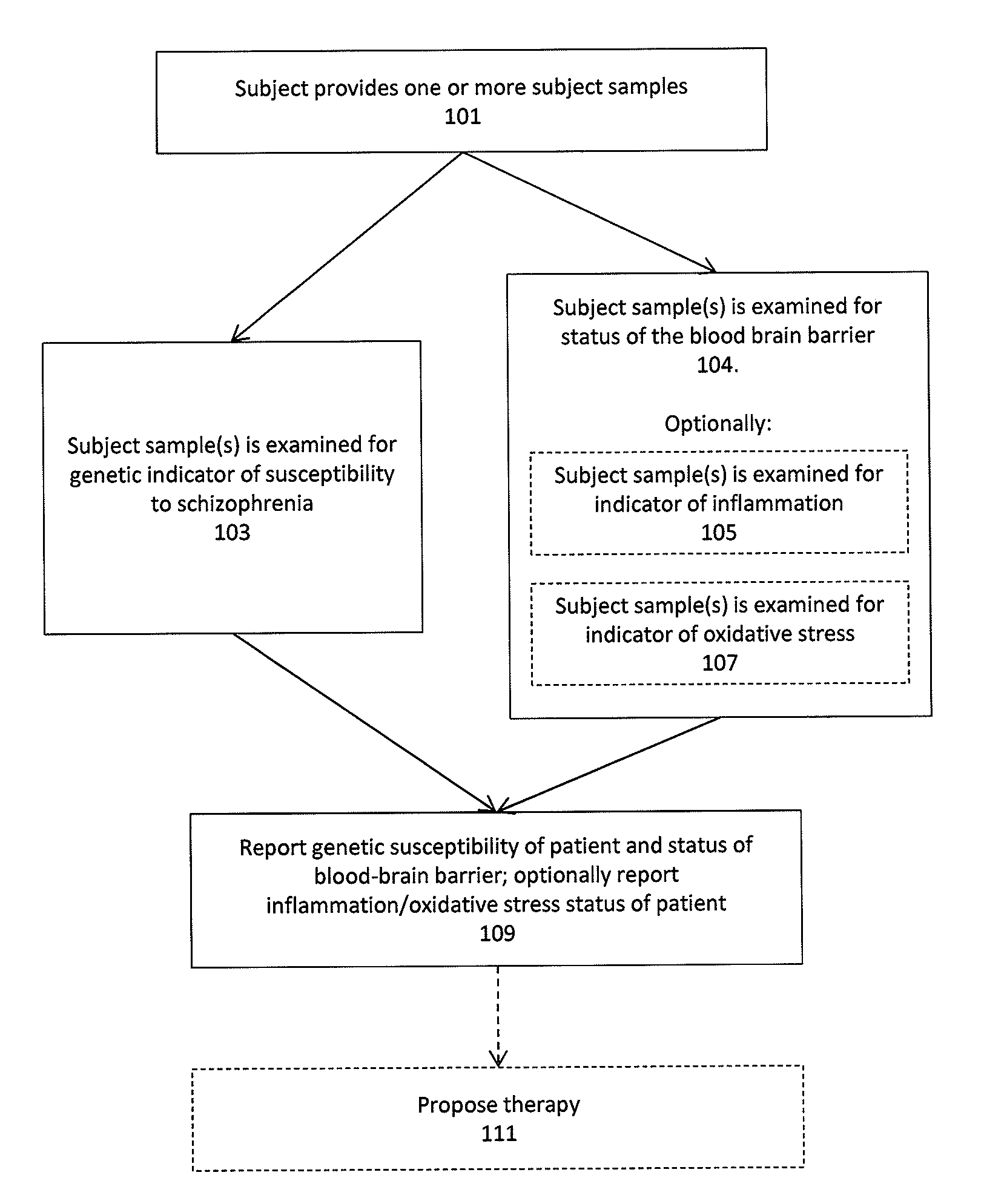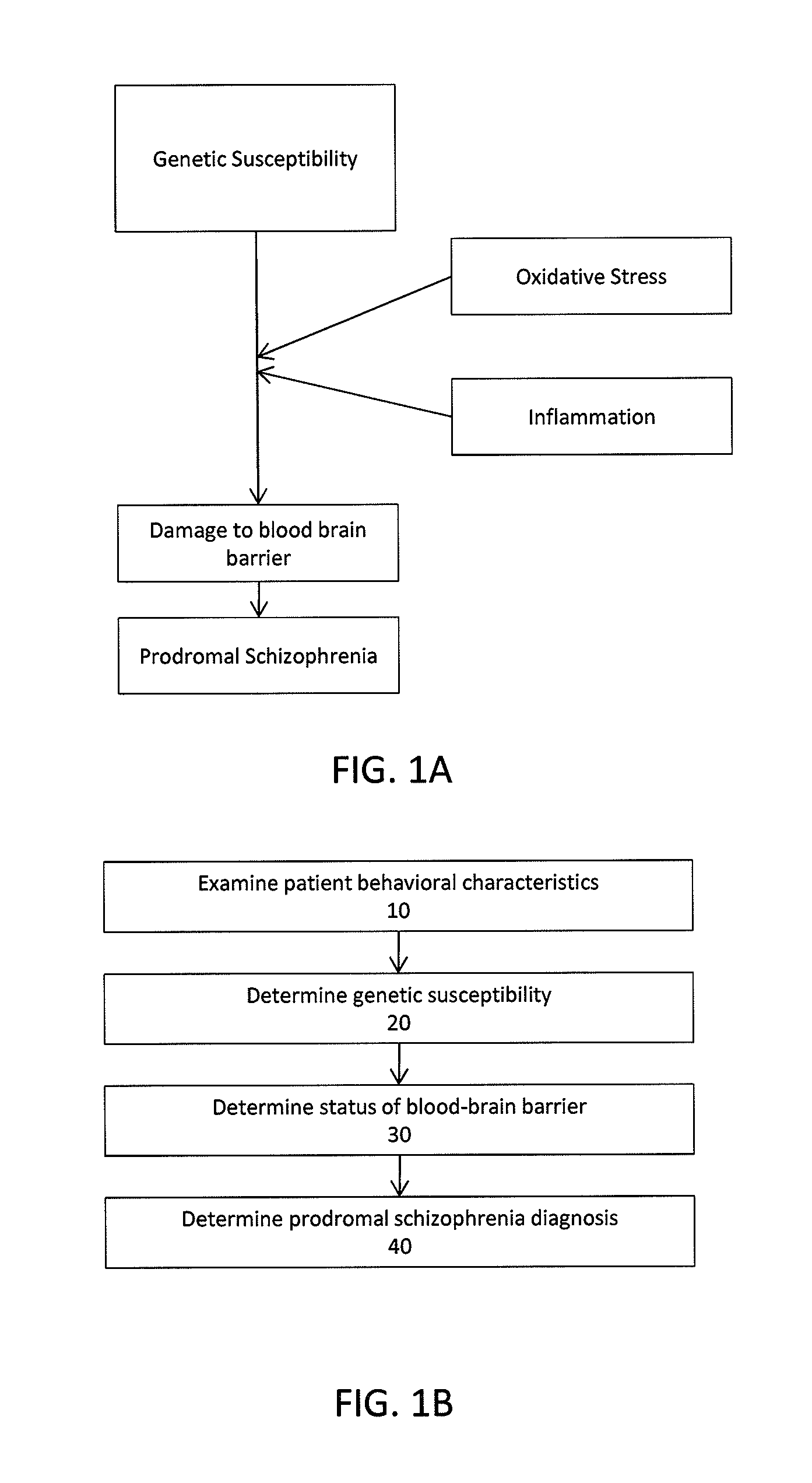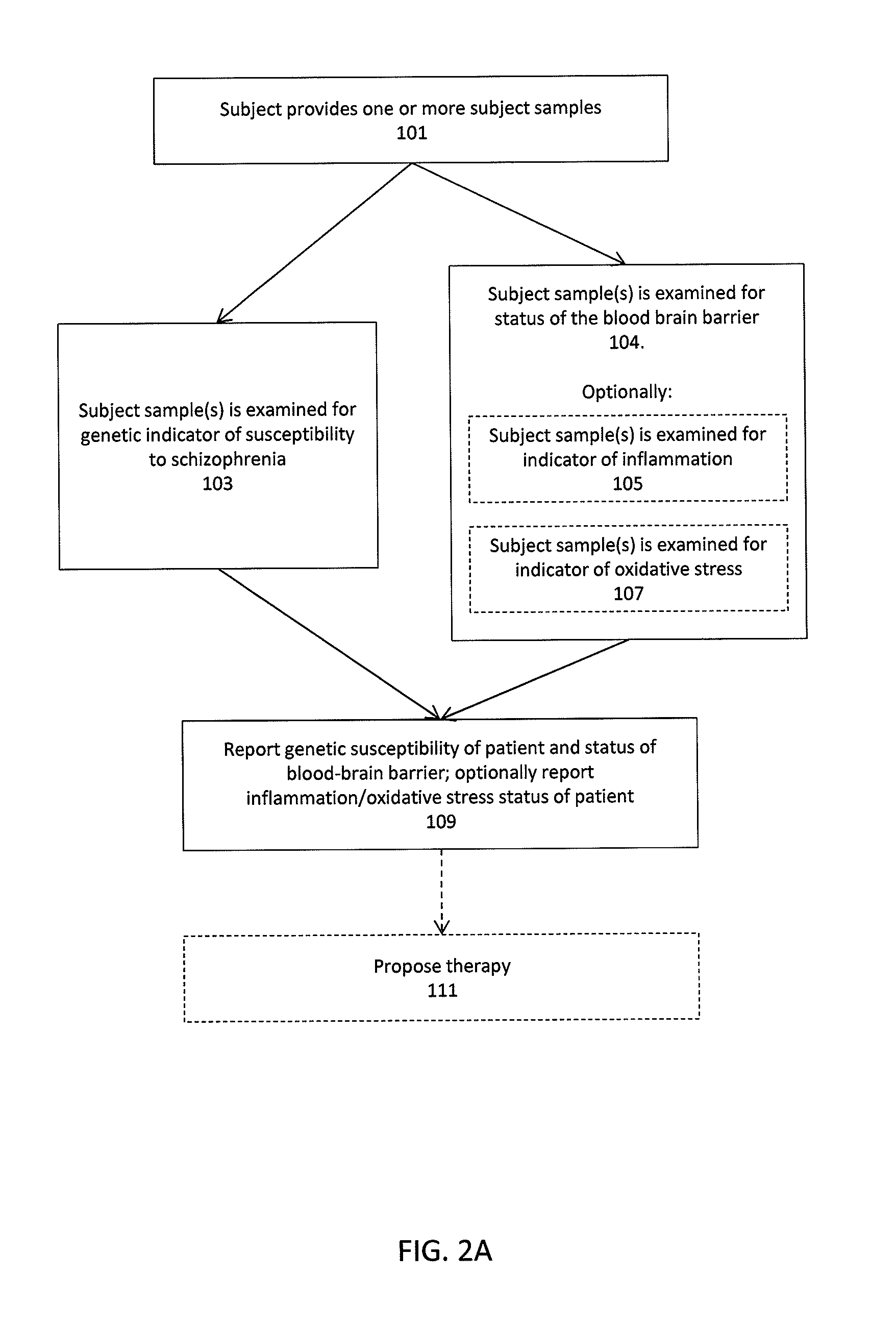Diagnosis and treatment of the prodromal schizophrenic state
a prodromal schizophrenic state and diagnosis technology, applied in the direction of magnetic measurement, drug composition, tetracycline active ingredients, etc., can solve the problems of reducing or even preventing the full, slowed the development of treatment research evidence base, and difficult to diagnose early and treat neuropsychiatric disorders such as schizophrenia
- Summary
- Abstract
- Description
- Claims
- Application Information
AI Technical Summary
Benefits of technology
Problems solved by technology
Method used
Image
Examples
Embodiment Construction
[0031]In general, the systems, compositions and methods described herein may be used to diagnose and / or treat prodromal psychosis. Although the examples described herein are specific to the diagnosis and treatment of schizophrenia, other psychosis may be similarly diagnosed and / or treated.
[0032]In general, methods of determining if a subject is at risk for developing schizophrenia may include (1) confirming that the subject is experiencing symptoms consisted with prodromal schizophrenia; (2) determining if the subject is susceptible to developing schizophrenia based on a genetic susceptibility (“genetic susceptibility for schizophrenia”); and (3) determining if the subject is under either (or both) oxidative stress or a pro-inflammatory state (“current oxidative / inflammation stress state”) with a decrease in blood-brain barrier (BBB) function and (4) applying novel diffusion tensor imaging modalities to confirm diagnosis. Thus, described herein are systems, such as screens or tests,...
PUM
| Property | Measurement | Unit |
|---|---|---|
| weight | aaaaa | aaaaa |
| concentration | aaaaa | aaaaa |
| oxidative stress | aaaaa | aaaaa |
Abstract
Description
Claims
Application Information
 Login to View More
Login to View More - R&D
- Intellectual Property
- Life Sciences
- Materials
- Tech Scout
- Unparalleled Data Quality
- Higher Quality Content
- 60% Fewer Hallucinations
Browse by: Latest US Patents, China's latest patents, Technical Efficacy Thesaurus, Application Domain, Technology Topic, Popular Technical Reports.
© 2025 PatSnap. All rights reserved.Legal|Privacy policy|Modern Slavery Act Transparency Statement|Sitemap|About US| Contact US: help@patsnap.com



